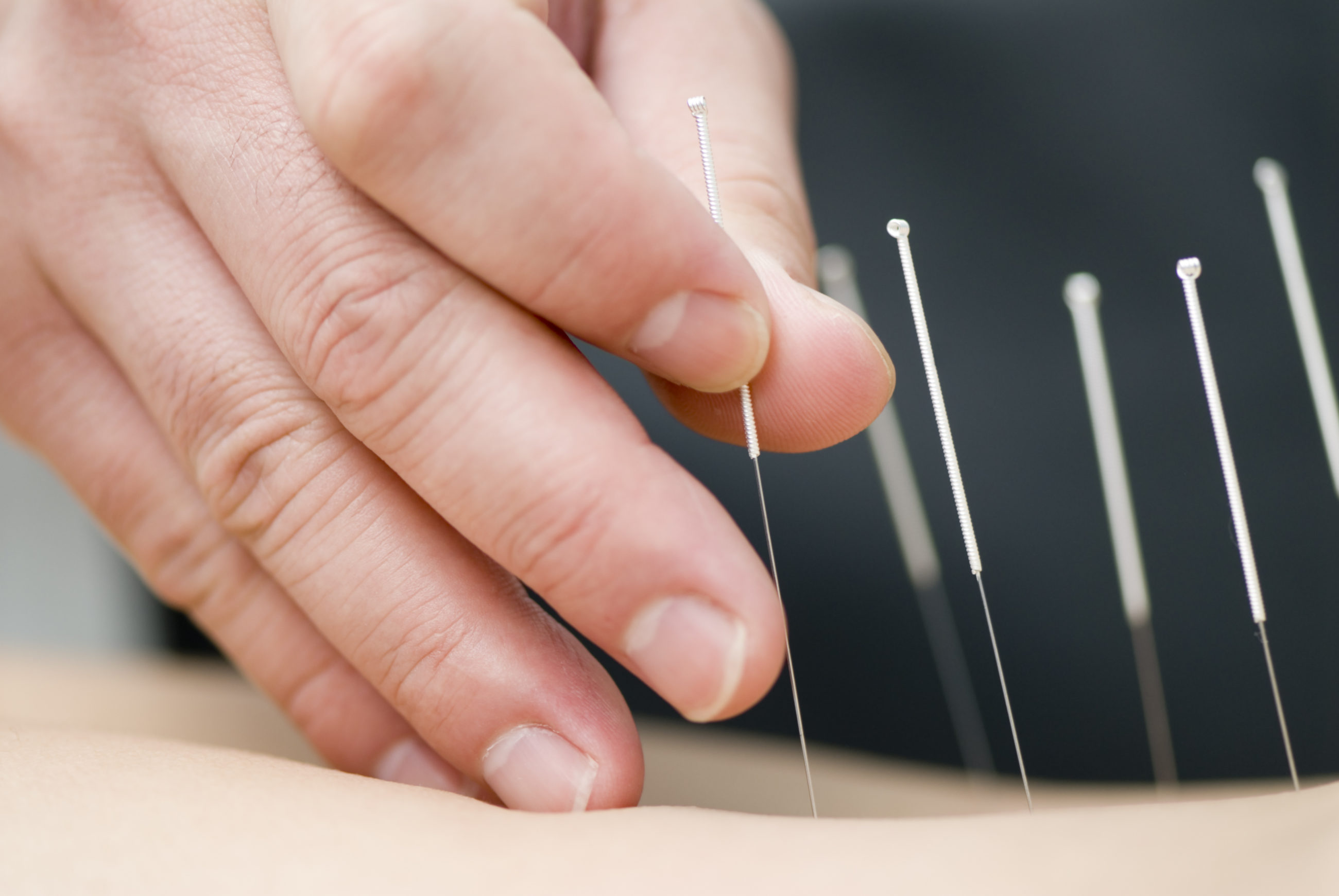Dry Needling

Dry Needling by a Physical Therapist: What You Should Know
Dry needling (DN) is a technique physical therapists use (where allowed by state law) to treat myofascial pain. The technique uses a "dry" needle, one without medication or injection, inserted through the skin into areas of the muscle, known as trigger points. DN uses a thin filiform needle to penetrate the skin and stimulate underlying myofascial trigger points, muscular, and connective tissues - for the management of neuromusculoskeletal pain and movement impairments. In cases when dry needling is used by physical therapists, it is typically 1 technique that's part of a larger treatment plan.
Physical therapists use Dry Needling with the goal of releasing or inactivating trigger points to relieve pain or improve range of motion. Preliminary research supports that dry needling improves pain control, reduces muscle tension, and normalizes dysfunctions of the motor end plates, the sites at which nerve impulses are transmitted to muscles. This can help speed up the patient's return to active rehabilitation. DN is not acupuncture, a practice based on traditional Chinese medicine and performed by acupuncturists. DN is a part of modern Western medicine principles, and supported by research.
As part of their entry level education, Physical Therapists are well educated in anatomy and therapeutic treatment of the body. Physical therapists who perform dry needling supplement that knowledge by obtaining specific postgraduate education and training.
What is a Trigger Point?
A trigger point describes a taut band of skeletal muscle located within a larger muscle group. Trigger points can be tender to the touch and can refer pain to distant parts of the body. Physical therapists utilize DN with the goal of releasing/inactivating the trigger points and relieving pain. Preliminary research supports that dry needling improves pain control, reduces muscle tension, normalizes biochemical and electrical dysfunction of motor endplates, and facilitates an accelerated return to active rehabilitation
What Kind of Needles Are Used?
Dry needling involves a thin filiform needle that penetrates the skin and stimulates underlying myofascial trigger points and muscular and connective tissues. The needle allows a physical therapist to target tissues that are not manually palpable.
Physical therapists wear gloves and appropriate personal protective equipment (PPE) when dry needling, consistent with Standard Precautions, Guide to Infection Prevention for Outpatient Settings, and OSHA standards. The sterile needles are disposed of in a medical sharps collector
Indications for Dry Needling:
Dry needling is a technique used to treat dysfunctions in skeletal muscle, fascia, and connective tissue, and, diminish persistent peripheral nociceptive input, and reduce or restore impairments of body structure and function leading to improved activity and participation.
Dry Needling may be incorporated into a treatment plan for both athletes with an acute injury, as well as more chronic situations when myofascial TrPs are present, which may lead to impairments in body structure, pain, and functional limitations.
At Atlanta Sport & Spine Physical Therapy, our PT's have seen great benefits when DN is combined with Physical Therapy treatment for the following conditions:
- Acute and chronic tendonitis
- Athletic and sports-related overuse injuries - specifically in runners and triathletes
- Post-surgical pain
- Headaches and whiplash
- Lower Back pain
- Post-traumatic injuries, motor vehicle accidents, and work related injuries
Please feel free to contact our PTs using our form or by calling 404.419.7760 if you have any questions about Dry Needling!

